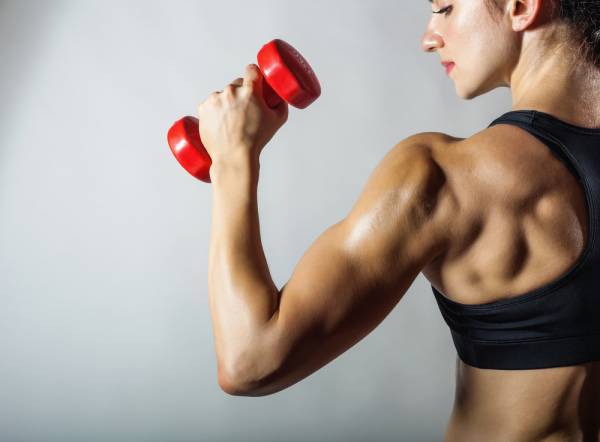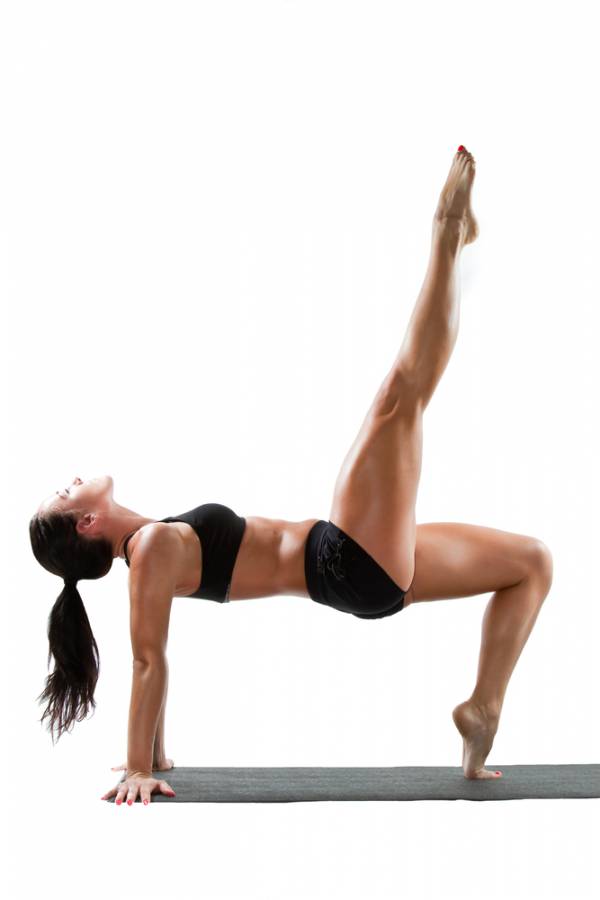Here we go again. The infamous core. I wrote on this topic a few months ago regarding what it is and why many make a big deal about it. The core-craze is almost cult-like in the fitness mainstream – a stand-alone shrine that many worship and idolize.
This article addresses the core as it functions relative to the overhead press exercise, which is interesting and worthy of study. But before we delve into that topic, let’s define exactly what the core is. Diligent research on the Inter-web provided me with twelve professional opinions on what the core is:
- “The core muscles are the superficial and deep spinal extensors muscles, abdominal muscles, pelvic floor muscles, and shoulder girdle and hip girdle muscles.”
- “The core is more than just your abdominals, though that is what many people associate with the word. The glutes and lower back muscles, called the erector spinae, may come to mind as well. But even these three groups are not all of the core muscles. There is also the psoas muscle of the hips and the multifidus of the spine.”
- “Your core is your center of gravity and where movement begins. The muscles of the core are comprised of two different systems, the movement system and the stabilization system. The stabilization system consists of these muscles: Transverse abdominus, internal oblique, lumbar multifidus, pelvic floor muscles, diaphragm and transversospinalis. The movement system muscles are the latissimus dorsi, erector spinae, iliopsoas, hamgstrings (sic), the hip adductors and hip abductors.”
- “The core refers to the pelvis, rib cage, and spinal region. The core is where a person’s center of gravity is located and where all movement begins. The core is a network of deep stabilization muscles (the inner unit-transverses abdominis, internal oblique, pelvic floor, diaphragm and lower portions of the longissimus and iliocostalis).”
- “The definition of the core would be the region of the hips, the spine and where the center of gravity is located. Within this area we have groups of muscles which help to stabilize the spine during movement, as well as muscles which help to produce such movement.”
- “All bodily movements are initiated around the core. Your core is composed of abs, back, pelvis floor and hips.”
- “Core exercises are about more than just strengthening your abdominal muscles; they also strengthen your hips, back and all muscles in the midsection of the body. The core is your center of gravity and where all body movements begin.”
- “Core exercise is any exercise that works any part of your trunk to your pelvic region.”
- “In layman’s terms the core consists of everything from your upper abs right above the rib cage to right below the gluteus to include the fron (sic) and back of the body. Stabilization muscles include internal and external obliques, lumbar, and pelvic floor muscles. Movement muscles include the erector spinae (lower back center above glutes), hip adductors and abductors (inner and outer thigh).”
- “Core exercises are any exercises that challenge the muscles that make up the torso, spine and pelvis, the area of the body that must stabilize the spinal column and hips and pelvic region, which are your base of support for all movements and actions.”
- “Core exercises focus on the abdomen, the lower abdomen and hips, the obliques, stabilizing muslces (sic), the spine and the back muslces (sic), as well as the butt.”
- “First by definition your core is everything except your arms and legs. So it is your entire spine and pelvis.”
Whew! That’s a lot of variation. It looks like the general consensus is the core is composed of all muscles in the mid-region of the human body, between the hips and shoulders. However, one definition included the shoulder girdle muscles. Another included the hip adductors, which would then include the knee as a part of the core because the hip adducting gracilis muscle inserts on the tibia, below the knee. Furthermore, another definition did not include the legs whatsoever. What? Let the core confusion linger on. Moving forward.
 Regarding the study on core involvement and the overhead press, it was suggested that little data exists regarding how the exercise is performed and the magnitude of core activation. The study compared the electromyographic activity (EMG) of the superficial core muscles – rectus abdominis, external oblique and erector spinae – between all combination of seated, standing, bilateral (both arms) and unilateral (single arm) dumbbell overhead presses among 15 healthy males.
Regarding the study on core involvement and the overhead press, it was suggested that little data exists regarding how the exercise is performed and the magnitude of core activation. The study compared the electromyographic activity (EMG) of the superficial core muscles – rectus abdominis, external oblique and erector spinae – between all combination of seated, standing, bilateral (both arms) and unilateral (single arm) dumbbell overhead presses among 15 healthy males.
Five repetitions were performed with 80% of a one-repetition maximum weight in randomized order. Results were analyzed with a two-way analysis of variance and a Bonferroni post hoc test. The position (standing or seated) x the exercise interaction (bilateral or unilateral) was significantly different for rectus abdominis (P = 0.016), but not for external oblique (P = 0.100) and erector spinae (P = 0.151). The following EMG results were observed:
Rectus abdominis:
- 49% lower in seated bilateral vs. unilateral.
- Similar in standing bilateral vs. unilateral.
- 81% lower in bilateral seated vs. standing.
- 59% lower in unilateral seated vs. standing.
External oblique:
- 81% lower in seated bilateral vs. unilateral.
- 68% lower in standing bilateral vs. unilateral.
- 58% lower in bilateral seated vs. standing.
- 28% lower in unilateral seated vs. standing.
Erector spinae:
- Similar in seated bilateral vs. unilateral.
- 18% lower in standing bilateral vs. unilateral.
- Similar in seated vs. standing bilateral and unilateral.
The researchers concluded that to augment neuromuscular activation of the superficial core muscles during the dumbbell overhead press exercise, the exercise should be performed standing as opposed to seated, and unilaterally as opposed to bilaterally.
Two take-home points:
Yes, the core muscles – as well as other muscle groups (due to the fact no one can offer an exact list of the muscles composing it) – are more active when performing an exercise in a non-supportive position such as standing as opposed to seated. It is just a natural phenomenon. Your body as a skeleton would collapse, otherwise. But it does not mean that any measurable and exceptional development of balance or stability will be gleaned from this. In fact, to better isolate a specific muscle or  muscle group, it is more prudent to position the body in a more supportive position to better focus on them. In example, a chest press performed on a stable surface better targets the chest and shoulder muscles as opposed to performing it on a stability ball (dangerous) or while standing using a cable/pulley system. Don’t worry about the core here, which leads to the second point:
muscle group, it is more prudent to position the body in a more supportive position to better focus on them. In example, a chest press performed on a stable surface better targets the chest and shoulder muscles as opposed to performing it on a stability ball (dangerous) or while standing using a cable/pulley system. Don’t worry about the core here, which leads to the second point:
To DIRECTLY strengthen the core, simply look at lumbo-pelvic (trunk) kinesiology:
Flexion – rectus abdominus, internal and external obliques, and psoas.
Extension – erector spinae and latissimus dorsi.
Lateral rotation – contralateral (opposite side) external oblique, ipsilateral (same side) internal oblique, ipsilateral latissimus dorsi, and contralateral psoas.
Lateral flexion – quadratus Lumborum, ipsilateral external oblique, internal oblique, ipsilateral erector spinae, and ipsilateral latissimus dorsi.
Flexion and rotation – rectus abdominis, contralateral external oblique, ipsilateral internal oblique, ipsilateral latissimus dorsi, and contralateral psoas.
Extension and rotation – erector spinae, contralateral external oblique, ipsilateral internal oblique, latissimus dorsi, and contralateral psoas.
To better target your core muscles, use a program that allows the muscles to receive more direct isolation in trunk flexion, extension, lateral rotation and lateral flexion. It worked years ago, and can still work today.
Photo courtesy of Shutterstock.






